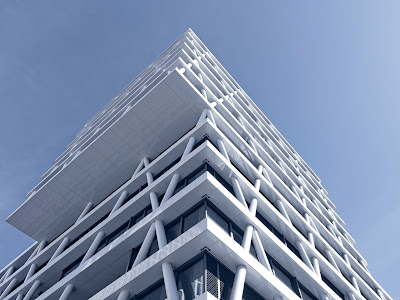The Importance of Cladding Project Management
Cladding as the word suggests, is the practice of cladding the surface of a building with other materials for an array of purposes such as aesthetics, protection from air and moisture, excess sound, insulation and so on. A variety of materials such as timber, composite materials, ceramic, aluminium etc are used in a cladding process. Cladding a structure is a very complicated process and several factors have to be taken into account. As it is an external skin, the chosen material must meet certain regulations and requirements such as wind load, installation, weather resistance, fire proofing and thermal insulation and conductivity are to be considered. Cladding materials are available in an array of colours and textures and adds to the aesthetics.
Cladding Project management is a specialized wing of services that offers cladding options to already existing building structures. They primarily investigate the extent of non-compliant and non-conforming external cladding on buildings. The expert team offers advice on the rectification of non-compliant cladding and recommend changes to the regulatory system. They undertake the holistic activities involved in this such as managing project resources and activities efficiently liaising with customer and site operators to monitor project progress and take suitable action. They communicate any modifications to all parties.
Benefits of Cladding
1. Aesthetics – Adding a cladding to the exterior of the building adds to the aesthetic value of the finished structure, besides accentuating the monetary value of the property. There is an assortment of cladding options available in terms of colour, textures, finishes and so on. This enables one in picking the right cladding material for complementary or contrasting effects.
2. Low maintenance - One of the primary reasons for choosing a cladding is owing to the low amount of maintenance required. While painted surfaces require more attention in terms of cleaning and maintaining, cladded walls require just normal washing.
3. Protection - The major function of a cladding is adding an extra layer of protection that will act as a shield and protect the material underneath. Moisture such as rain and snow will also be barred from entering the structure due to the cladding.
4. Internal Insulation - Based on the thickness of the cladding used, it offers higher levels of insulation inside the building. Cladding also acts as a layer of protection against excessive noise from the outside.
5. Strength - The cladding layer improves the mechanical strength of the building it is fixed on, adding to the overall durability of the structure. This also helps in saving money on repairs in other areas of the building.
Cladding Project management is a specialized wing of services that offers cladding options to already existing building structures. They primarily investigate the extent of non-compliant and non-conforming external cladding on buildings. The expert team offers advice on the rectification of non-compliant cladding and recommend changes to the regulatory system. They undertake the holistic activities involved in this such as managing project resources and activities efficiently liaising with customer and site operators to monitor project progress and take suitable action. They communicate any modifications to all parties.
Benefits of Cladding
1. Aesthetics – Adding a cladding to the exterior of the building adds to the aesthetic value of the finished structure, besides accentuating the monetary value of the property. There is an assortment of cladding options available in terms of colour, textures, finishes and so on. This enables one in picking the right cladding material for complementary or contrasting effects.
2. Low maintenance - One of the primary reasons for choosing a cladding is owing to the low amount of maintenance required. While painted surfaces require more attention in terms of cleaning and maintaining, cladded walls require just normal washing.
3. Protection - The major function of a cladding is adding an extra layer of protection that will act as a shield and protect the material underneath. Moisture such as rain and snow will also be barred from entering the structure due to the cladding.
4. Internal Insulation - Based on the thickness of the cladding used, it offers higher levels of insulation inside the building. Cladding also acts as a layer of protection against excessive noise from the outside.
5. Strength - The cladding layer improves the mechanical strength of the building it is fixed on, adding to the overall durability of the structure. This also helps in saving money on repairs in other areas of the building.
Clad Melbourne is a team of project managers who engage in a variety of cladding projects across suburbs of Melbourne, Prahran, Preston and Box Hill. They scrutinise buildings to understand its challenges in terms of sturdiness, strength, aesthetics, and so on, and offers cladding solutions to better the structure. They take up an array of projects such as Combustible Cladding, Owners Corporation Project Management and Owners Corporation Defects Management, and indulge in activities such as Aluminum Cladding and Flammable cladding. They have expert in their respective fields who come with in-depth understanding of cladding solutions and are capable of offering advice on the best and safe practices in cladding such Cladding safety and non-compliance cladding.


Comments
Post a Comment